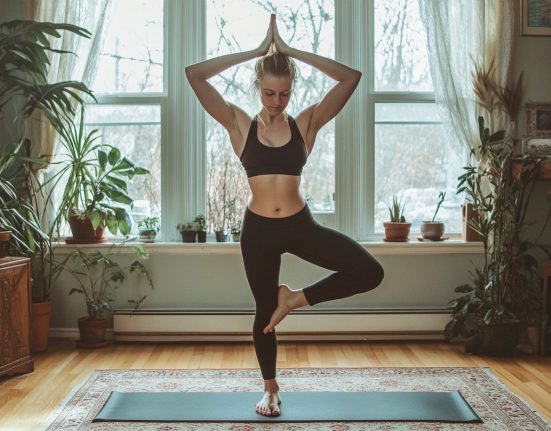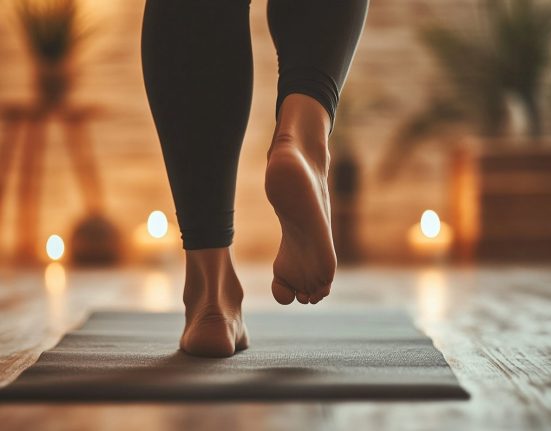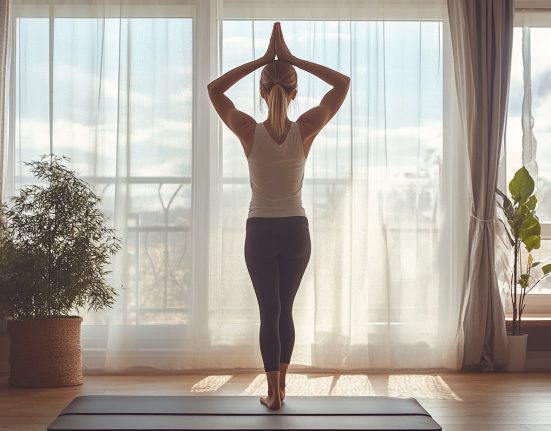Find out how abduction vs. adduction exercises compare and the benefits of including both movements in your fitness routine.
When you think of the terms “abduction” and “adduction,” the thigh-strengthening machines you use on leg days at the gym are likely to come to mind — though you may not always remember which piece of equipment is which.
Despite this common mental image, abduction and adduction movements aren’t just for your lower half. Here, fitness experts break down the various abduction and adduction exercises for your upper and lower body. Plus, they reveal the benefits of these movements and the key differences between abduction vs. adduction, so you’ll never get them confusedagain.
Abduction vs. Adduction, Explained
In order to fully grasp abduction vs. adduction, you first need to understand the midline of the body, says Leigha VandenToorn, C.S.C.S., P.P.S.C., an NASM-certified personal trainer. Imagine a line going from the top of your head straight down the middle of your body to your feet, dividing you into two halves, she says. Adduction exercises involve moving your limbs toward the midline, while abduction exercises entail moving your limbs away from the midline, she explains. “A lot of times, people only think of hip adduction and abduction and moving their legs around, but you also can do the same thing with your arms and shoulders,” she adds.
Abduction and adduction movements can also be performed horizontally (think: a chest fly) or vertically (such as a lat pull-down), says VandenToorn. “For a lat pull-down, your arms are starting away from your body — your hands are up high, your lat muscle is stretched long, and it’s not contracted yet,” she explains. (ICYDK, the lat muscle — aka latissimus dorsi — sits below your shoulder blades and helps extend and rotate the shoulder and arm.) “When you contract that lat muscle, it’s allowing you to pull the weight down and bring your arm closer to your body or closer to the midline.”
Abduction Definition
With just a one-letter difference between the terms “abduction” and “adduction,” keeping their meanings straight can be a serious challenge. One easy — albeit hilariously silly — way to remember what abduction entails? “Think about if an alien came and abducted you — they’re taking you away from Earth,” says VandenToorn. “That’s how you can think about abduction because you are taking away from the midline.”
To perform upper-body abduction movements, you’ll primarily call on the different “heads” or parts of your deltoid muscle, which cover your shoulder and help stabilize the joint, she says. A front raise, for example, will target your anterior deltoids, a reverse fly will work your posterior deltoids, and a side raise will isolate your lateral deltoids, she explains. While each exercise utilizes and strengthens a different part of your deltoids, they each involve bringing your arms away from your midline, says VandenToorn.
Your hip abductors are the main movers for lower-body abduction exercises. Located on the outside of your hips, this muscle group includes the glute medius, glute minimus, and tensor fasciae latae, says VandenToorn. “These muscles help move your leg away from your body and rotate the leg at the hip joint,” adds Kells James, P.P.S.C., an ACE-certified personal trainer. “When you think of walking or doing any single-leg movement, you’re going to engage those abductors.”
Common Abduction Exercises
Although they sound complex, you’ve likely seen others tackle abduction movements at the gym or have even tried them yourself. Here are a few of the most common abduction exercises to include in strength workouts, according to the experts.
- Hip abductor
- Glute kickback
- Clamshell
- Lying or standing leg raise
- Lateral banded walk
- Side plank with lifted top leg
- Lateral raise
- Front raise
- Reverse fly
Adduction Definition
“An easy way to remember ‘adduction’ is that you are adding something toward the midline, so those movements are all going to come toward the center of your body,” says VandenToorn. To create that adduction movement during upper-body exercises, you’ll use the lats and pectoral muscles (chest muscles that help move and rotate the arm), she explains. Lower-body adduction exercises, on the other hand, will call on your hip adductors — the adductor brevis, adductor longus, adductor magnus, obturator externus, and gracilis, says VandenToorn. “Your adductors’ primary function is to provide lower-body stability and mobility, and weak adductors can contribute to a lot of injuries, including groin strains,” adds James.
Common Adduction Exercises
Just like abduction movements, adduction exercises are staples in many folks’ fitness routines. Below, you’ll find some of the most common adduction moves, according to the trainers.
- Hip adductor
- Lateral lunge
- Cossack squat
- Lat pull-down
- Pull-up
- Chest fly
The Benefits of Performing Abduction and Adduction Exercises
While there’s a good chance you’ll personally enjoy one type of movement more than the other, it’s essential to mix both abduction and adduction exercises into your fitness routine, according to the experts. “If you’re only focusing on one [type of movement], that’s when you can start experiencing muscular imbalances, and you might experience joint pain because your joints aren’t being supported equally,” says VandenToorn. Specifically, the hip abductors and adductors both play a key role in stabilizing your pelvis, and if one of those muscle groups isn’t strong enough to offer that essential support, you could develop lower back pain, she notes. Plus, the weaker muscles can become more vulnerable to injury while training, and those on the stronger side can suffer an overuse injury, Alena Luciani, M.S., C.S.C.S., the founder of Training2xl, previously told Shape.
If you’re already dealing with muscle imbalances, though, you may want to focus a bit more on one specific type of movement until you correct those discrepancies. For example, James is currently experiencing plantar fasciitis in her right foot, caused by a weak glute medius on her right side, she says. To strengthen the muscle and restore her body’s balance, she’s temporarily devoting a bit more of her workout programming to abduction exercises, she says.
You may also want to prioritize abduction if you have knee valgus (when your knees cave inward, often during running or squatting), adds VandenToorn. “That could be a sign that your hip abductors, which keep your knee in alignment, aren’t very strong, so you would need to prioritize [those muscles],” she says. “Simply strengthening the abductors of the hip could totally alleviate the knee pain that somebody might be experiencing.” Again, you wouldn’t completely skip over adduction exercises in these types of instances — they’d just temporarily take the backseat, says VandenToorn.
How to Add Abduction Exercises and Adduction Movements to Your Fitness Routine
If you’re planning out a well-rounded workout routine, there’s a good chance you’ll naturally practice a mix of both abduction and adduction exercises, and you won’t need to deliberately add them to your training sessions, says VandenToorn. Plus, some exercises already include abduction and adduction movements. “The lateral lunge is actually a really interesting one because it works both your adductors and your abductors,” she explains. “If you’re doing a right lateral lunge, as you’re stepping out with the right foot, the muscles on the outside of your right hip are working. Then with the left leg that’s straight, those adductor, inner thigh muscles are working.”
But if you want to take a more calculated approach, consider incorporating specific abduction and adduction movements into your workout, warm-up routine, or finisher, VandenToorn suggests. “Before you do your squats, maybe you do some clamshells and a side plank to get your body warm, get your mind-muscle connection turned on and working,” she says. “…You can even use them at the end as a burnout-type exercise where you’re like, ‘Okay, now I really want to get my glute medius fired up at the end of my workout with glute kickbacks.'”
Hitting both your lower and upper body with abduction and adduction movements throughout the week is also key, says VandenToorn. “When you think about abduction and adduction, you’re usually thinking about lower body, which is great and strengthening your hips,” she says. “But don’t forget about your upper body too. The shoulder is such an easy joint to injure and to experience pain, so we want to just really make sure we’re strengthening it.”
Regardless of the abduction vs. adduction exercises you try, don’t be afraid to modify the moves so they work best for your body, needs, and abilities, says James. “Don’t feel like you have to get to XYZ level that you see on social media — take it from where you currently are,” she explains. “Choose a couple of movements that you really enjoy doing and then get really strong at those. If you have to modify them and then progress, that is perfectly fine.”








